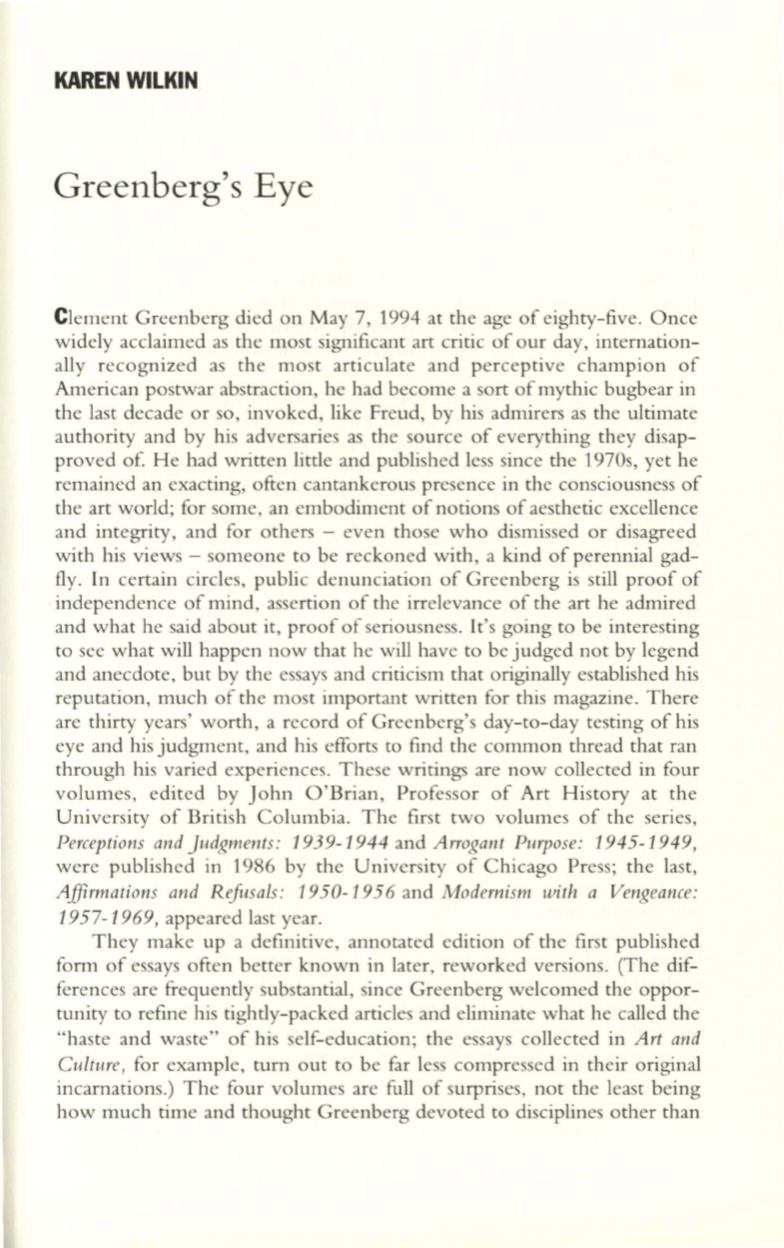
KAREN WILKIN
Greenberg's Eye
Clement Greenberg died on May 7, 1994 at the age of eighty-five. Once
widely acclaimed as the most significant art critic of our day, internation–
ally recognized as the most articulate and perceptive champion of
American postwar abstraction, he had become a sort of mythic bugbear in
the last decade or so, invoked, like Freud, by his admirers as the ultimate
authority and by his adversaries as the source of everything they disap–
proved of He had written little and published less since the 1970s, yet he
remained an exacting, often cantankerous presence in the consciousness of
the art world; for some, an embodiment of notions of aesthetic excellence
and integrity, and for others - even those who dismissed or disagreed
with his views - someone to be reckoned with, a kind of perennial gad–
fly. In certain circles, public denunciation of Greenberg is still proof of
independence of mind, assertion of the irrelevance of the art he admired
and what he said about it, proof of seriousness. It's going to be interesting
to see what will happen now that he will have to be judged not by legend
and anecdote, but by the essays and criticism that originally established his
reputation, much of the most important written for this magazine. There
are thirty years' worth, a record of Greenberg's day-to-day testing of his
eye and his judgment, and his efforts to find the common thread that ran
through his varied experiences. These writings are now collected in four
volumes, edited by John O'Brian, Professor of Art History at the
University of British Columbia. The first two volumes of the series,
Perceptions and Judgments:
1939-1944
and
Arrogant Purpose: 1945-1949,
were published in 1986 by the University of Chicago Press; the last,
Affirmations and Refusals: 1950-1956
and
Modernism with a Vengeance:
1957-1969,
appeared last year.
They make up a definitive, annotated edition of the first published
form of essays often better known in later, reworked versions. (The dif–
ferences are frequently substantial, since Greenberg welcomed the oppor–
tunity to refine his tightly-packed articles and eliminate what he called the
"haste and waste" of his self-education; the essays collected in
Art and
Culture ,
for example, turn out to be far less compressed in their original
incarnations.) The four volumes are full of surprises, not the least being
how much time and thought Greenberg devoted to disciplines other than


